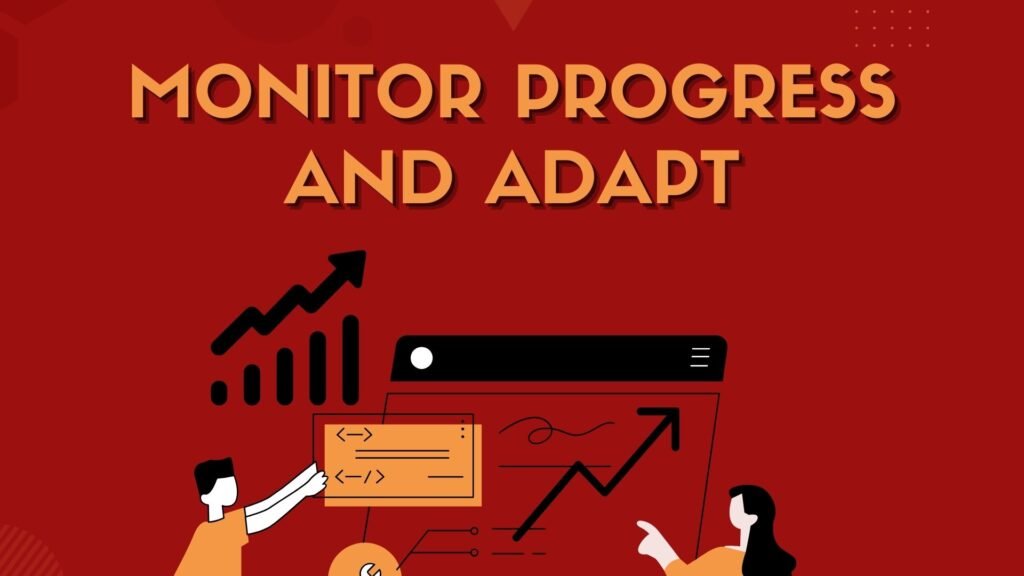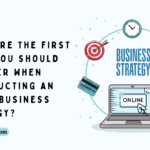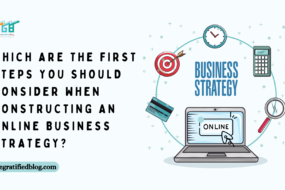
Creating a business plan is a big step for any entrepreneur. It shows that you have thought deeply about your idea, researched your market, and mapped out how to achieve your goals. But creating the plan is just the start of the journey. The real challenge lies in turning that plan into a successful business.
If you are wondering what to do next, do not worry. This guide, “What must an entrepreneur do after creating a business plan?” will take you through every step in detail. From validating your idea to building your brand and managing your finances, we will cover it all. Let us dive in.
What Is A Business Plan?

A business plan is a written document that outlines your business goals and the strategies you will use to achieve them. It acts as a roadmap, guiding you through each stage of starting and running your business.
Key Elements of a Business Plan
- Executive Summary – A brief overview of your business, including your mission and goals.
- Company Description – Details about your business, such as what it does and what makes it unique.
- Market Research – Information about your industry, competitors, and target audience.
- Products or Services – A description of what you offer and why people should buy it.
- Marketing Strategy – How you plan to promote and sell your products or services.
- Operational Plan – Details on how your business will run, including staffing and processes.
- Financial Plan – Revenue projections, funding needs, and budget plans.
Why is a Business Plan Important?
- Helps you stay organized and focused.
- Attracts investors and lenders by showing a clear vision.
- Identifies potential risks and ways to overcome them.
- Acts as a guide for decision-making and growth.
How To Create A Business Plan?

Whether you are starting a small business or a big company, having a clear plan increases your chances of success. Here is a step-by-step process to creating a solid business plan:
Step 1: Write an Executive Summary
The executive summary is a short introduction to your business. It gives a quick overview of what your business is about.
What to include:
- Business name and location
- What your business does
- Your mission and vision
- A short summary of your financial goals
- Why your business will succeed
🔹 Tip: Keep this section brief and to the point. Investors or partners will read this first, so make it engaging.
Step 2: Describe Your Business
This section explains what your business is, what problem it solves, and how it stands out from competitors.
What to include:
- The problem your business solves
- What makes your business unique
- Your business structure (sole proprietorship, partnership, LLC, etc.)
- Your industry and market trends
🔹 Tip: Focus on what makes your business different and valuable to customers.
Step 3: Research Your Market
Understanding your market is key to success. Research your competitors and customers to know what works and what does not.
What to include:
- Target audience – Who are your customers? What do they need?
- Competitor analysis – Who are your competitors? How will you compete with them?
- Industry trends – Is the market growing or shrinking? Are there any risks?
🔹 Tip: Use real data and facts. If possible, talk to potential customers to understand their needs better.
Step 4: Explain Your Products or Services
Now, describe what your business offers. Explain how your products or services will help customers.
What to include:
- A list of your main products or services
- How they benefit customers
- Pricing strategy
- Future plans (new products or services you may offer later)
🔹 Tip: Keep this section clear and simple. Avoid using complicated language.
Step 5: Create a Marketing Plan

Your business will not succeed if people do not know about it. A marketing plan outlines how you will attract customers.
What to include:
- Promotion strategies – Will you use social media, ads, word-of-mouth, or influencers?
- Branding – What will your logo, business colors, and message look like?
- Sales strategy – Will you offer discounts, bundle deals, or referral programs?
🔹 Tip: Focus on marketing strategies that work best for your target audience.
Step 6: Outline Your Business Operations
This section explains how your business will run daily.
What to include:
- Business location – Will you operate online or in a physical store?
- Suppliers – Who will provide the materials or products you need?
- Technology and tools – What software or equipment will you use?
- Staffing – Will you hire employees or work alone?
🔹 Tip: Think about what will make your business run smoothly and efficiently.
Step 7: Plan Your Finances
Money is a big part of any business. This section helps you understand your costs and potential profits.
What to include:
- Startup costs – How much money do you need to start?
- Monthly expenses – Rent, salaries, marketing, utilities, etc.
- Revenue projections – How much money do you expect to make?
- Funding sources – Personal savings, loans, investors, crowdfunding, etc.
🔹 Tip: Be realistic with numbers. If you are seeking investors, they will want to see clear and reasonable financial projections.
Step 8: Set Business Goals
Your business plan should include specific goals for growth and success.
What to include:
- Short-term goals (first 6 months to 1 year)
- Long-term goals (next 3-5 years)
- Key performance indicators (KPIs) – How will you measure success?
🔹 Tip: Make your goals SMART – Specific, Measurable, Achievable, Relevant, and Time-bound.
Step 9: Review and Finalize Your Business Plan
Once your business plan is complete, go through it again. Check if everything makes sense. Ask a mentor, friend, or expert to review it.
Final checklist:
- Is the business idea clear?
- Is the market research well explained?
- Are the financial estimates realistic?
- Are the goals achievable?
🔹 Tip: Your business plan is not set in stone. Update it as your business grows and market conditions change.
What Must An Entrepreneur Do After Creating A Business Plan?
After creating a business plan, an entrepreneur must focus on executing, refining, and managing the plan to turn it into a successful business. Here’s a step-by-step breakdown of what to do next:
Step 1. Validate Your Business Idea

Even if your business plan looks perfect on paper, you need to test if your idea works in the real world.
How to validate your business idea:
- Talk to potential customers – Ask people if they would buy your product or service. Get honest feedback.
- Conduct market research – Study your competitors. See what they do well and what they lack.
- Create a prototype or MVP (Minimum Viable Product) – Build a basic version of your product and test it.
- Analyze demand – Use online tools like Google Trends or social media to check if people are interested in your idea.
🔹 Tip: If people show interest and are willing to pay, that is a good sign. If not, you may need to adjust your plan before moving forward.
Step 2. Handle Legal Requirements
Before starting operations, make your business official. Every business must follow legal requirements to avoid problems later.
What you need to do:
- Register your business – Choose a business structure like sole proprietorship, LLC, or corporation.
- Get necessary licenses and permits – Some businesses need special approvals before operating.
- Apply for a tax ID – If required, get an Employer Identification Number (EIN) for tax purposes.
- Open a business bank account – Keep personal and business finances separate for easier tracking.
🔹 Tip: Skipping legal steps can lead to fines or even business closure, so handle these tasks early.
Step 3. Secure Funding for Your Business

Even if you have personal savings, you may need extra money to get started. Without enough funds, your business could struggle before it even takes off.
Ways to fund your business:
- Self-funding – Use your own savings if possible.
- Small business loans – Many banks offer startup loans if you have a strong business plan.
- Grants and government programs – Some organizations provide free funding to new businesses.
- Investors – If your business has high growth potential, you can pitch your idea to investors.
- Crowdfunding – Platforms like Kickstarter allow people to donate money to support new businesses.
🔹 Tip: Make sure you have enough funds to cover startup costs and at least the first few months of expenses.
Step 4. Build a Strong Online Presence
Today, most businesses need an online presence. Even if you run a physical store, customers will search for you online before making a decision.
What you should do:
- Create a website – Use platforms like WordPress, Wix, or Shopify to set up a professional site.
- Set up social media accounts – Choose platforms where your target customers spend time. This could be Facebook, Instagram, LinkedIn, or TikTok.
- List your business on Google – A Google Business Profile makes it easy for people to find you.
- Start a blog – Posting valuable content can attract more visitors to your website.
- Engage with your audience – Respond to comments and messages to build relationships with potential customers.
🔹 Tip: A strong online presence helps build trust and makes it easier for people to find and connect with your business.
Step 5. Develop a Marketing Strategy
Having a great product is not enough. People need to know about it. That is where marketing comes in.
Steps to build a marketing strategy:
- Define your target audience – Who are your customers? What do they need?
- Choose the right marketing channels – This could include social media, email marketing, SEO, or paid ads.
- Create a content plan – Share valuable content that educates or entertains your audience.
- Run promotions – Offer discounts, giveaways, or referral programs to attract new customers.
- Track and adjust – Use tools like Google Analytics to see what works and improve your strategy.
🔹 Tip: Marketing is an ongoing process. Keep testing different strategies until you find what works best.
Step 6. Set Up Business Operations
Without proper systems in place, running a business can get messy. You need a solid structure to manage everything smoothly.
What to focus on:
- Inventory management – If you sell products, keep track of stock to avoid running out.
- Customer service – Offer great support through email, chat, or phone to keep customers happy.
- Billing and payments – Set up a system to accept payments easily.
- Hiring employees – If you need help, start looking for reliable team members.
- Automation tools – Use software to handle repetitive tasks like email responses and scheduling social media posts.
🔹 Tip: Setting up the right operations from the start will make it easier to scale your business.
Step 7. Build a Network
Success in business is not just about what you know, but also who you know. Networking can open doors to new opportunities.
How to expand your network:
- Attend industry events – Conferences and trade shows are great places to meet potential partners and customers.
- Join business groups – Networking groups can introduce you to other entrepreneurs.
- Collaborate with others – Partner with businesses that complement yours to reach more customers.
- Use LinkedIn – Connect with professionals and engage in industry discussions.
- Find a mentor – Learning from experienced entrepreneurs can save you from making costly mistakes.
🔹 Tip: Strong connections can help you find clients, investors, and business partners.
Step 8. Monitor Progress and Adapt

Once your business is running, do not just sit back and hope for success. Keep track of your progress and make adjustments when needed.
What to track:
- Sales and revenue – Are you meeting your financial goals?
- Customer feedback – Are people happy with your product or service?
- Marketing results – Which strategies are working? Which ones are not?
- Competitor activity – Stay updated on what your competitors are doing.
🔹 Tip: If something is not working, be willing to change your approach. The best businesses keep evolving.
Step 9. Stay Motivated and Keep Learning
Running a business is not always easy. There will be challenges, but staying motivated is key.
Ways to stay motivated:
- Celebrate small wins – Every success, big or small, means progress.
- Learn from failures – Mistakes are part of the journey. Learn from them and move forward.
- Keep learning – Read books, take courses, and stay updated on industry trends.
- Surround yourself with positive people – Being around motivated entrepreneurs can keep you inspired.
🔹 Tip: The more you grow, the stronger your business will become.
Frequently Asked Questions
Q1. What must an entrepreneur do after creating a business plan?
Ans. After creating a business plan, an entrepreneur should secure funding, register the business, build a team, develop a marketing strategy, and start executing operations to bring their vision to life.
Q2. What is the next step after creating a business plan?
Ans. The next step is securing resources—this includes funding, legal registrations, hiring key personnel, setting up operations, and launching marketing efforts to attract customers.
Q3. What comes after the business plan?
Ans. Implementation follows the business plan. Entrepreneurs should focus on securing investment, setting up operations, hiring staff, executing marketing strategies, and monitoring financial performance.
Q4. What should an entrepreneur do to develop a business plan?
Ans. Research the market, define business goals, outline strategies, create financial projections, analyze competition, and establish an execution plan to ensure the business plan is comprehensive and actionable.
Q5. What are the 7 steps of a business?
Ans.
- Idea generation
- Market research
- Business planning
- Securing funding
- Product development
- Marketing and sales
- Growth and scaling
Conclusion
Starting a business is an exciting but challenging journey. After creating a business plan, your next steps will determine your success. By validating your idea, securing funding, building a strong brand, and delivering excellent customer experiences, you can turn your plan into reality.
Remember, success does not happen overnight. Stay persistent, keep learning, and adapt to the changing needs of your business. With determination and the right strategies, you can create a business that thrives for years to come.








No Comments